The Catalyst Killing - [15]
I asked who they thought that enemy might be. Without hesitation, he replied the Nazis were a possibility, as the family had always fought against them and his son was, after all, writing his as yet incomplete thesis about them. As far as they had understood, he had made some important discoveries, but he recommended that I contact his supervisor if I wanted to know more about the thesis. Falko had always been a considerate son and had not wanted to involve them in it too much. They had also understood that he needed to live his own life and did not want to put any pressure on him.
They had of course supported his political activities, even though this involved a new left-wing perspective they did not understand. Falko had always shown a great interest in China, even as a child, whereas for them it was a distant, foreign land. They had at first been sceptical of the notion that Moscow communism might benefit from ideas from China, but had eventually been persuaded by their son’s long and well-reasoned arguments. They were therefore very happy that he established his own group to embrace the positive aspects of both China and the Soviet.
Anders Pettersen was a childhood friend who had been in and out of the flat since he was ten. They had of course also seen a lot of Marie Morgenstierne in the two years before Falko disappeared. They only knew the others in the group by name, and their son had unfortunately not talked much about them or the group’s work. They could not remember having met Trond Ibsen, Kristine Larsen or Miriam Filtvedt Bentsen.
With regard to Marie Morgenstierne, Falko’s parents, like most other people their age, hoped that their son would have his own family and they would become grandparents. They had been very happy when he came home one day in autumn 1966 and told them that he had a girlfriend. They admitted they had been less positive when they heard about her upper-class background, but were then pleasantly surprised by her character and opinions. They were delighted when Falko and Marie announced their engagement in autumn 1967. They had talked about a wedding in late autumn 1968 or early spring 1969, but no date had been set.
The Reinhardts had never had any direct contact with Marie Morgenstierne’s family. They had not made any moves themselves, nor had they felt there was any interest from the other side. Marie Morgenstierne spoke very little about her family, but they had understood that she was an only child and that she had had very little contact with her father since her mother died. Whether the father or other family members might come to the wedding or not was a question that had been discussed at their last meal together, which took place here, on 29 July 1968. Marie Morgenstierne had shrugged and commented that her father could come if he wanted, as could her uncles and aunts. Falko’s parents had thought this was a good answer.
Falko Reinhardt had disappeared a week later. And now, two years on, his fiancée had been shot and killed. It seemed to be as inexplicable to Falko’s parents as it was to me. They thought that she had perhaps been murdered by someone who wanted to stop the group, but had nothing to back up this theory.
I thanked them warmly for all they had told me and promised to get in touch immediately should I discover anything that might cast more light on their son’s fate. They, in turn, thanked me and promised to contact me if they thought of anything else that might be of interest. It felt as though we had become closer somehow in the course of my visit.
I asked, almost in passing, where they had been the day before. They both nodded in understanding and said that they had been together at home yesterday evening, as they were most evenings. One of them was always at home, in case Falko or anyone else who knew something about what had happened to him got in touch. They were generally to be found here. Arno Reinhardt had sold his photography business shortly before his son’s disappearance. They had not been active in politics since they were excluded from the NCP along with other Furubotn followers in 1949. So they seldom went out unless it was to go shopping or some other necessary errand.
It struck me that the Reinhardts fitted perfectly with two of Patricia’s concepts from our previous murder investigations. Both parents had orbited Falko like satellites from the day he was born in 1944 until his disappearance in 1968. And since his disappearance they had become human flies who circled round and round what had happened, without being able to move on.
I felt a deep sympathy for them, and was increasingly puzzled by what had happened to their son. And yet my visit had in no way brought me closer to a solution. I still lacked anything that might resemble a theory about either what had happened when Falko Reinhardt disappeared, or what had happened when Marie Morgenstierne was killed.
XIV
When I left the Reinhardts’ museum of photographs in Seilduk Street, there was still an hour left until my meeting with Marie Morgenstierne’s father. But there was now a reasonable hope that I might find Miriam Filtvedt Bentsen at the SPP office in Pilestredet.
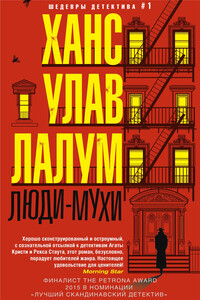
Убит бывший лидер норвежского Сопротивления и бывший член кабинета министров Харальд Олесен. Его тело обнаружено в запертой квартире, следов взлома нет, орудие убийства отсутствует. На звук выстрела к двери Олесена сбежались все соседи, но никого не увидели. Инспектор уголовного розыска Колбьёрн Кристиансен считает, что убийство, скорее всего, совершил кто-то из них. Более того, он полагает, что их показания лживы.
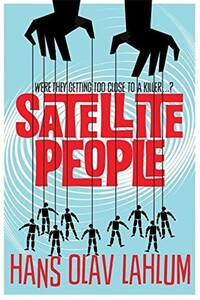
A gripping, evocative, and ingenious mystery which pays homage to Agatha Christie, Satellite People is the second Norwegian mystery in Hans Olav Lahlum's series. Oslo, 1969: When a wealthy man collapses and dies during a dinner party, Norwegian Police Inspector Kolbjorn Kristiansen, known as K2, is left shaken. For the victim, Magdalon Schelderup, a multimillionaire businessman and former resistance fighter, had contacted him only the day before, fearing for his life. It soon becomes clear that every one of Schelderup's 10 dinner guests is a suspect in the case.
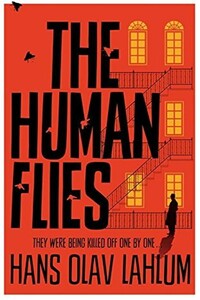
Oslo, 1968: ambitious young detective Inspector Kolbjorn Kristiansen is called to an apartment block, where a man has been found murdered. The victim, Harald Olesen, was a legendary hero of the Resistance during the Nazi occupation, and at first it is difficult to imagine who could have wanted him dead. But as Detective Inspector Kolbjorn Kristiansen (known as K2) begins to investigate, it seems clear that the murderer could only be one of Olesen's fellow tenants in the building. Soon, with the help of Patricia – a brilliant young woman confined to a wheelchair following a terrible accident – K2 will begin to untangle the web of lies surrounding Olesen's neighbors; each of whom, it seems, had their own reasons for wanting Olesen dead.
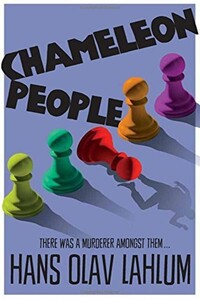
From the international bestselling author, Hans Olav Lahlum, comes Chameleon People, the fourth murder mystery in the K2 and Patricia series.1972. On a cold March morning the weekend peace is broken when a frantic young cyclist rings on Inspector Kolbjorn 'K2' Kristiansen's doorbell, desperate to speak to the detective.Compelled to help, K2 lets the boy inside, only to discover that he is being pursued by K2's colleagues in the Oslo police. A bloody knife is quickly found in the young man's pocket: a knife that matches the stab wounds of a politician murdered just a few streets away.The evidence seems clear-cut, and the arrest couldn't be easier.
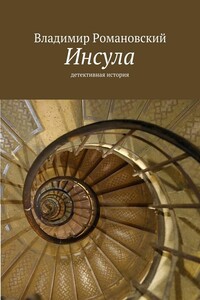
Детективная история, произошедшая в Санкт-Петербурге. Обычные люди в необычных обстоятельствах. Любовь, ненависть, жадность, драки и власть.
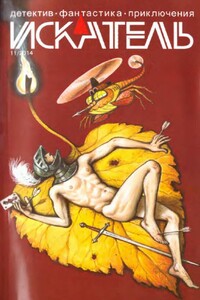
«ИСКАТЕЛЬ» — советский и российский литературный альманах. Издаётся с 1961 года. Публикует фантастические, приключенческие, детективные, военно-патриотические произведения, научно-популярные очерки и статьи. В 1961–1996 годах — литературное приложение к журналу «Вокруг света», с 1996 года — независимое издание.В 1961–1996 годах выходил шесть раз в год, в 1997–2002 годах — ежемесячно; с 2003 года выходит непериодически.Содержание:Анатолий Королев ПОЛИЦЕЙСКИЙ (повесть)Олег Быстров УКРАДИ МОЮ ЖИЗНЬ (окончание) (повесть)Владимир Лебедев ГОСТИ ИЗ НИОТКУДА.
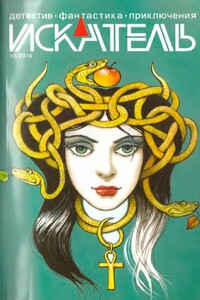
«ИСКАТЕЛЬ» — советский и российский литературный альманах. Издается с 1961 года. Публикует фантастические, приключенческие, детективные, военно-патриотические произведения, научно-популярные очерки и статьи. В 1961–1996 годах — литературное приложение к журналу «Вокруг света», с 1996 года — независимое издание.В 1961–1996 годах выходил шесть раз в год, в 1997–2002 годах — ежемесячно; с 2003 года выходит непериодически.Содержание:Олег Быстров УКРАДИ МОЮ ЖИЗНЬ (повесть);Петр Любестовский КЛЕТКА ДЛЯ НУТРИИ (повесть)
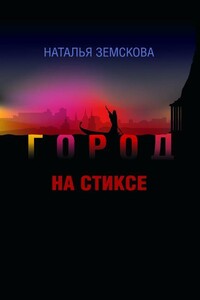
Наталья Земскова — журналист, театральный критик. В 2010 г. в издательстве «Астрель» (Санкт-Петербург) вышел её роман «Детородный возраст», который выдержал несколько переизданий. Остросюжетный роман «Город на Стиксе» — вторая книга писательницы. Молодая героиня, мечтает выйти замуж и уехать из забитого новостройками областного центра. Но вот у неё на глазах оживают тайны и легенды большого губернского города в центре России, судьбы талантливых людей, живущих рядом с нею. Роман «Город на Стиксе» — о выборе художника — провинция или столица? О том, чем рано или поздно приходится расплачиваться современному человеку, не верящему ни в Бога, ни в черта, а только в свой дар — за каждый неверный шаг.
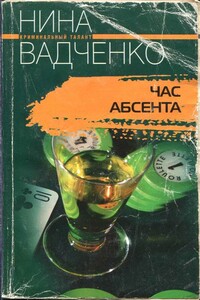
А ведь все так невинно начиналось! Четыре подружки коротали вечерок с бутылочкой «зеленого дьявола» и вели милую дамскую беседу о том… как бы им «грамотно» отправить на тот свет ненавистного шефа. Почему бы не помечтать о приятном в теплой дружеской компании? Все бы ничего, да только шефа вскоре действительно нашли мертвым, к тому же кто-то снял на видео посиделки четырех любительниц абсента. Впрочем, они и сами друг друга теперь подозревают. И распутать этот клубок противоречий по силам только их старой знакомой, неугомонной журналистке Инне Пономаренко…
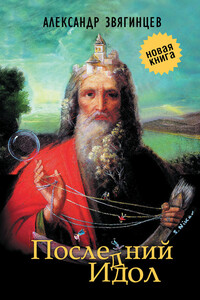
В сборник «Последний идол» вошли произведения Александра Звягинцева разных лет и разных жанров. Они объединены общей темой исторической памяти и личной ответственности человека в схватке со злом, которое порой предстает в самых неожиданных обличиях. Публикуются рассказы из циклов о делах следователей Багринцева и Северина, прокуроров Ольгина и Шип — уже известных читателям по сборнику Звягинцева «Кто-то из вас должен умереть!» (2012). Впервые увидит свет пьеса «Последний идол», а также цикл очерков писателя о событиях вокруг значительных фигур общественной и политической жизни России XIX–XX веков — от Петра Столыпина до Солженицына, от Александра Керенского до Льва Шейнина.